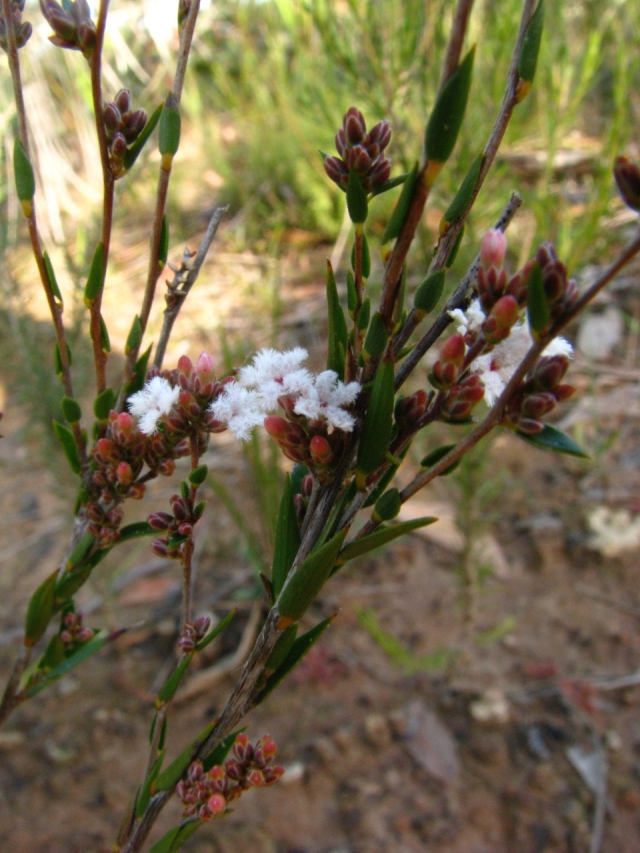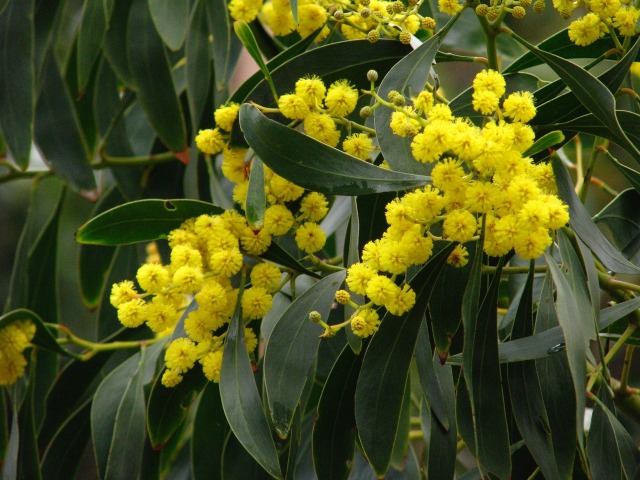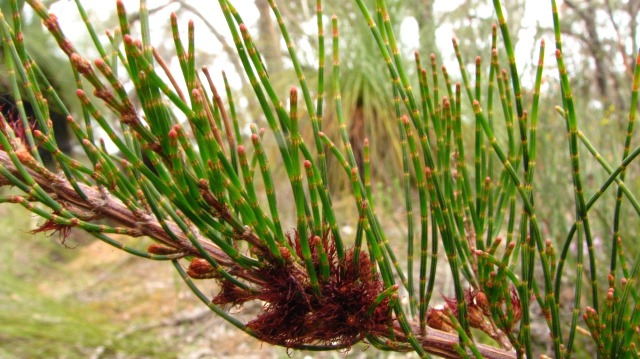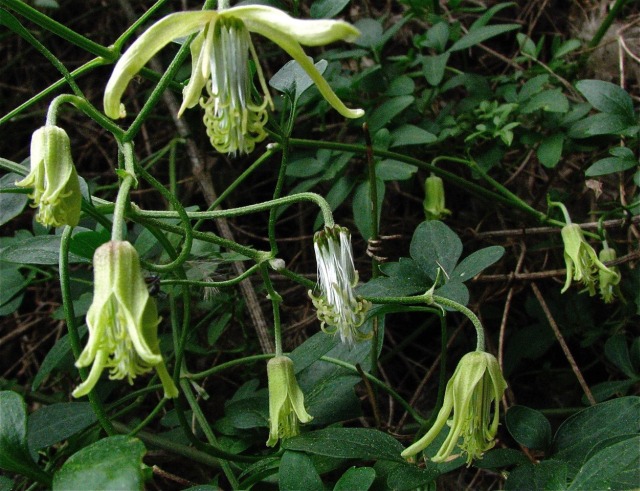August walks always fill me with a sense of anticipation; which plants will be on show?
The show of flowers is so weather dependent and variable. In July, I checked out Teds Track for signs of August flowers and found a few low-growing plant species in bud. I also noticed details that are not so obvious when the flowers have developed. One of my favourite early spring plants Leafless Bitter-pea, Daviesia brevifolia, had small brown buds in the axils of the sharp, spine-like phyllodes. I enjoy this plant in all seasons with its rigid, bare, sculpted winter stems, followed by the glorious salmon-coloured pea flowers, which I now realise grow in the axils.
 Leafless Bitter-pea
Leafless Bitter-pea
There were many specimens of Erect Guinea-flower, Hibbertia riparia. The short, rolled, evenly-spaced leaves make it easily identified even without flowers, but the buds, unevenly distributed along the stems, were clearly sessile (stalkless), again something I had not noticed before.
Another common plant, Common Beard-heath, Leucopogon virgatus var virgatus, was in bud and identifiable by its short, narrow, sharply-pointed leaves. The distinctive small white flowers with fluffy petals grow in spikes at the end of the stems. Last autumn’s environmental burn should make this track well worth a visit over the next few months.
 Common Beard-heath
Common Beard-heath
I had thought I might find the lovely blue pea flowers of Common Hovea, Hovea heterophylla, as this straggling low-growing plant is usually a feature of our woodlands and heathlands in the late winter, but I will have to look elsewhere. The flowers grow in the leaf axils in clusters of two or three, and the longish narrow leaves are spread out along the stem. You may notice that they become narrower and longer nearer the end of the stem.
So what else might be out? Last month Philippa highlighted a number of wattles to look out for, and I would like to add my favourite, the widespread Golden Wattle, Acacia pycnantha, which was made the official floral emblem of Australia in 1988. Its rich, golden, clustered balls provide such a contrast to the long, rich-green leaf-like phyllodes.
 Golden Wattle
Golden Wattle
Along the Fraser Avenue extension track I will be looking out for the low-growing Small Sheoak, Allocasuarina misera. At the Plant Study Group, we enjoyed looking closely, with magnifiers and microscopes, at the bright, almost orange tassels on the male plants, and the small, deep-red balls on the female plants.
 Small Sheoak (male)
Small Sheoak (male)
 Small Sheoak (female)
Small Sheoak (female)
To finish, another common plant, which is seeding all over my garden, is the delightful climber Small-leaved Clematis, Clematis microphylla. The plants are dioecious, which means that male and female flowers are born on separate plants. In July, as in other years, the male plants had developed small white buds, but the female buds were only just starting to grow.
 Small-leaved Clematis (male)
Small-leaved Clematis (male)
 Small-leaved Clematis (female)
Small-leaved Clematis (female)
The male buds will soon open out into comparatively short-lived four-petalled starry flowers with spreading yellow stamens, followed soon by the much longer-flowering female plants with their droopy flowers. Does anyone know if this difference in flowering times happens with other dioecious plants?
Enjoy your August walks, but you may well need your Flowers of Anglesea and Aireys Inlet to identify the unexpected.
Ellinor Campbell